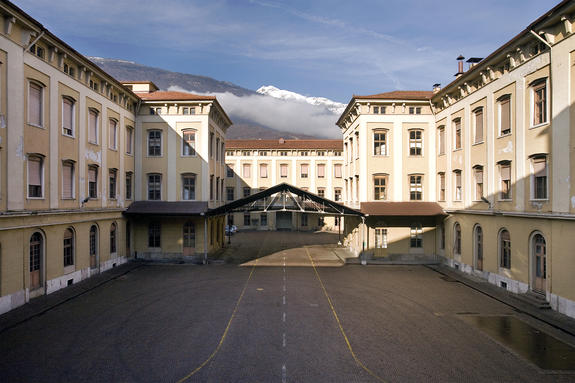
- Activate, Actuate:
- Adam Leech
- Adriana Cavarero
- Adrien Tirtiaux
- Alexander Vaindorf
- ALTERAZIONI VIDEO
- Althea Thauberger
- Anawana Haloba in collaboration with Francesca Grilli
- Anders Kreuger
- Andreas Duscha
- Andreas Müller with David Bennewith
- Andree Korpys and Markus Löffler
- Angela Melitopoulos
- Anna Faroqhi
- Anna Witt
- Anne-Mie Van Kerckhoven
- Ant Hampton
- Arundhati Roy
- Attila Bruni
- Auditory Epode
- Azra Aksamija
- Barbara Visser
- Barbora Klimova
- Bernadette Corporation
- Bernd Ribbeck
- Beth Campbell
- Brave New Alps
- BURGHARD
- Büro für kognitiven urbanismus/Office for cognitive urbanism
- CandidaTV
- Charles Lim Li Yong
- Christian Mayer
- Christian Philipp Müller
- Christoph Ruckhäberle
- Claire Fontaine
- contemporary culture indexBased in San Francisco, US
- Danh Vo
- Daniel Knorr
- Daria Martin
- Darius Ziura
- David Adjaye
- Dayanita Singh
- Deborah Ligorio
- Didier Fiuza Faustino
- Emre Hüner
- etoy.CORPORATION
- Eveli¯na Deicˇmane
- Ewa Partum
- Eyal Sivan
- Eyal Weizman
- Famed
- Francesco Gennari
- Gianluca and Massimiliano De Serio
- Gianni Pettena
- Glen Neath
- Graham Harwood
- Graham Harwood, Richard Wright and Matsuko Yokokoji
- Guido van der Werve
- Hannes Hoelzl
- Hansa Thapliyal
- Harold de Bree
- Heide Hinrichs
- Heidrun Holzfeind
- Hélène Binet
- Hiwa K.
- I. Helen Jilavu
- Igor Eškinja
- Ivana Franke
- Jaime Pitarch
- Janek Simon
- Javier Tellez
- Joachim Koester
- João Maria Gusmão + Pedro Paiva
- Johannes Vogl
- Jorge Otero-Pailos
- Jörgen Svensson
- Jos De Gruyter and Harald Thys
- Josef Strau
- Judi Werthein
- Kamen Stoyanov
- Karl Holmqvist
- KateRˇina Šedá
- Keren Cytter
- Klaus Weber
- Knut Åsdam
- Kristina Bræin
- Latifa Echakhch
- Lawrence Liang
- Libia Castro & Ólafur Ólafsson
- Luca Trevisani
- Luigi Ontani
- m-city
- manifeSTATION
- Marcos Chaves
- Marcus Coates
- Margareth Obexer
- Margrét H. Blöndal
- Martin Pichlmair
- Martino Gamper
- MATTER OF FACT
- Matthew Fuller
- Mazzoni’s Trento Palace: To the Return of Color
- Meg Stuart
- Melati Suryodarmo
- Michał Budny
- Michelangelo Antonioni
- Miklós Erhardt and Little Warsaw
- Miks Mitrevics
- Mladen Dolar
- Mobile Academy, Hannah Hurtzig, Chris Kondek, in collaboration with Karin Harrasser
- Nader Ahriman
- Natascha Sadr Haghighian
- Neil Cummings & Marysia Lewandowska
- Nico Vascellari
- Nikolaus Hirsch & Michel Müller
- Nina Canell
- Omer Fast
- Oskar Dawicki
- Pamela Rosenkranz
- Peter Coffin
- Peter Friedl
- Philippe Rahm
- Philippe Rahm
- Pietro Roccasalva
- Piratbyrån (The Bureau of Piracy)
- Professor Bad Trip (Gianluca Lerici)
- Rä di Martino
- Rabih Mroué
- RADIO PAPESSE
- Ragnar Kjartansson
- Ranu Ghosh
- Reinhard Kropf & Siv Helene Stangeland
- Renée Green
- Ria Pacquée
- Ricardo Jacinto
- Riccardo Previdi
- Roee Rosen
- Rosalind Nashashibi
- Runa Islam
- Rupali Gupte & Prasad Shetty
- Saadi Yousef
- Sanjay Kak
- Saskia Sassen
- Shahid Amin
- Social Art Praxis
- Sonia Leimer
- Stefano Bernardi
- Stephen Willats
- TABULA RASA
- Tamy Ben-Tor
- Tatiana Trouvé
- Teresa Margolles
- TEUFELSgroup
- The Museum for Franco Basaglia
- The Museum of European Normality
- the Museum of Learning Things
- The Museum of projective personality Testing
- the Museum of the Stealing of Souls
- Thomas Meinecke
- Tim Etchells
- Timo Kahlen
- Tom Holert with Claudia Honecker
- Uqbar Foundation
- Valérie Mréjen
- Walter Niedermayr
- Xisco Mensua
- Yane Calovski
- Zilvinas Kempinas
- ZimmerFrei
- __fabrics interseason

artists
manifeSTATION
curated by the Office for Cognitive Urbanism
ROVERETO
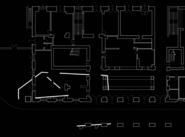
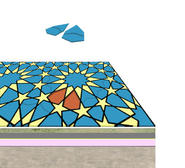
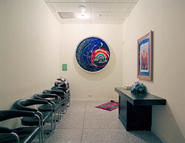
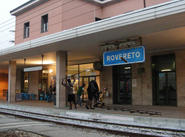

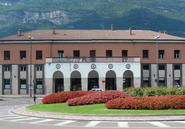
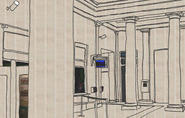
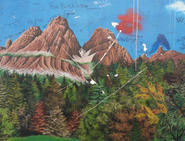
The Office for Cognitive Urbanism has conceptualized a project for Manifesta 7 that searches out the incongruities of claims to local and also regional identity, as well as exploring trans-national problems. As an intermediary space in the center of the city, the train station of Rovereto has been chosen as an exemplary place for the project. Train stations function as a kind of interface between arrival and departure, an area that is not yet completely realized, but also not really vanished. This ambivalent and precarious form of localization is symptomatic not only for travelers but also for any subject that experiences itself as incongruent to regional local color, due to its cultural, national and economical situation: migrants, refugees, adherents of different creeds, foreign language speakers etc. The Office for Cognitive Urbanism thus proposes to accentuate the role of the train station in its significance as a place of refuge and contact for all of these precarious presences, and has therefore invited seven artists to develop their own contributions on the theme. The modification of the train station in this way represents a spectrum of claims that will address precisely those people whose presence in the city and the region they were prepared for only in part. For now, in this intersection between arrival and departure, the city exists only as a name. What significance this name holds for those people who arrive and depart depends on how the city will react to their manifold and diverse needs. The manifeSTATION project represents this nexus as an urban and regional symptom, a fusion of a city planning-artistic statement and an imaginary station.
The Office for Cognitive Urbanism works with city planning topics in the context of the discourses that arise from theories of media, space and subject. Its projects rotate around the political and cultural constructions of meanings of space and their alteration. For Manifesta 7, it has designed an “imaginary train station” that will temporarily inscribe itself into the current spatial configurations of the Rovereto train station, and which will present the projects of seven invited artists. An essential point of the intervention is to designate the point of transition between the private and public requirements of space. Thereby the manifeSTATION project focuses on those who arrive at a city and region only to a certain extent and are, therefore forced to face the common mechanisms of inclusion and exclusion pertaining to territorial conceptions of identity.
The work of Aksamija rotates around the topics and problems of Orientalism occurring under new signifiers. Her aim is to deal with the mostly primary assertion of sacral rooms of a territorial stamp, and to deconstruct them via nomadic and mobile architecture. The ambiguity of space, spatial image and religiosity is thereby a programmatic point in her work. For Manifesta 7 she presents to present a portable traveling mosque in the form of a bag that can be altered into a prayer rug, with integrated slippers. This is about the charm of portability, the inherent physical qualities and the alteration of subjects into changing figures representing identity. At the same time, it deals with questions of cultural, religious and “class” identity that are doubtless connected to topics such as Islam phobia, the fear of terrorism and the development of societies of control.
One of the constant topics in the work of Andreas Duscha is provided by the examination of architecture and photography, which targets the spatial image as the result of a kind of architecture that during the construction of spaces appeals to a spatial imagination that exceeds the mere room. Hence, the built object becomes only the visible part of the imaginary. On the occasion of Manifesta 7, Andreas Duscha has confronted himself with inter-religious prayer rooms such as can be found worldwide in airports or hospitals, as rooms of seclusion or devotion. What appears in the documentation of these rooms is the – sometimes tragicomic – aesthetic of an attempt to bring cultural and religious differences together, and trying to develop a spatial image for it.
At the center of Sonia Leimer’s works is the topic of the relationship between staged (mise-en-scène) and imaginary cultures. Within this topic, architecture will be examined as an effect of the medial constitution of current societies and their narratives. The artistic intervention of Sonia Leimer’s work is expressed as the re-staging of events and as the fictionalization of spaces and their social and ideological configuration. In her project for Manifesta 7, Sonia Leimer treats the train station as a stage set for a fictitious film, and then follows the medial capability of the ensuing sense of place. Memories of a “film set” of a fictitious film, organized in the public spaces of the train station, thus lead the perception of the place into an indissoluble entanglement of current and virtual space.
Whenever Christian Mayer deals with pragmatic or ordinary political or cultural topics, it always takes place in combination with a reflection on the role of the media in which these questions are represented. For this project, Mayer focuses on the structure of Manifesta 7 itself, which seems to be a temporal paradox as it occurs at the same time in four different places. Until the 19th century, each of these places had its own calculation of time, which required a supra-regional standardization only with the beginning of railway constructions, strikingly represented by the station clock. His project consists in turning back the clock to the calculation of time as it was done before the introduction of standard CET, and to make the differences inside the cultural, political and economical homogenizations once again measurable by using the former differences of clock times.
Migration is a central topic for Stoyanov, whether based on economical, political or personal reasons. If one‘s attempts at assimilation fail, there remains nothing but a life at the margins of society, excluded and isolated amidst everyday cultural life – something well known but still foreign. For Manifesta 7, Stoyanov addresses the topic of urban events and art biennials themselves, since they characterize entire cities as cultural territory and thus contain implicit mechanisms of inclusion and exclusion. The cultural homogenization of urban spaces divides the people into those that consume these places and those that have to live in them. The Disneylend Express connects both.
The questions that form the basis of Adrien Tirtiaux’s, spatial interventions possess a common denominator: the experience that various forms of people’s movement or behavior inside rooms show a tendency to be transformed into commonality – as if there were an instruction manual explaining how to use them. This point of view allows us to not only forget the optional usage of spaces, but defines them as manifest pre-settings. His interventions provide optional instructions that alter the appearance of the space according to each social and cultural situation, and thus evoke new spaces of action. And if a spatial image appears as something that is impossible, there is perhaps a hidden or forgotten variable lurking just behind it – a space within the space.
A central topic within the work of Anna Witt is the everyday occurrence of the political; a circumstance that reflects itself also within medial translations and the according images regarding the conception of what constitutes the political. At the same time, it reflects itself within the experience of being almost completely powerless and excluded from this political discourse. The ambivalence of politics and this lack of power provide the coordinates for Witt’s artistic interventions. Initiating a debate with the local population, she looks for possible focal points within this ambivalence and performs the staging of participation in political development, against this general speechlessness. Due to the act of staging, the requisite distance can be maintained – it is only the image of policy that changes, as it must now face the concept of possible participation in political action.
Location
ROVERETO
ADAM BUDAK: "PRINCIPLE HOPE"
EX PETERLINI, VIA SAVIOLI 20 – MANIFATTURA TABACCHI, P.ZZA MANIFATTURA 1 -STAZIONE FERROVIARIA, PIAZZALE ORSI, I-38068 ROVERETO, ITALY
more